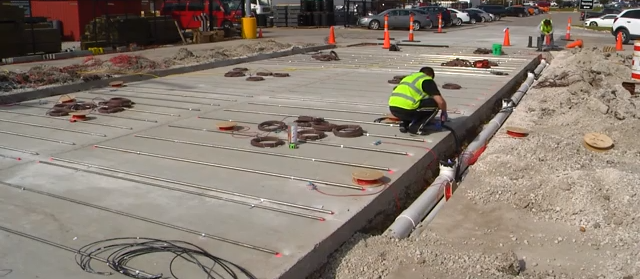Smart pavement with de-icing properties
Engineers from the Iowa State University and Iowa DOT developed a heated-pavement system for preventing ice buildup. The system uses stainless steel electrodes, carbon fibers, and sensors embedded in the concrete. The results were promising, as the generated heat could effectively melt snow and ice.
For more information: Visit link

Redox flow batteries (RFBs), as a promising large-scale energy storage technology
Redox flow batteries (RFBs) use soluble active materials in the electrode reactions, which distinguish them from conventional solid state rechargeable batteries. RFBs aim to achieve high ionic conductivity with minimal cross-over at low cost. For more information, visit here: Visit link 

A new technology using self-lubricating organogels (SLUGs) has the potential to be used as an anti-icing agent in the aerospace industry
A new technology using self-lubricating organogels (SLUGs) has the potential to be used as an anti-icing agent in the aerospace industry. For more information, check out the following links:


Nanoengineering concrete with graphene drastically reduces carbon footprint
Graphene is used in a new concrete with improved properties and lower carbon footprint. For more information, visit here: Visit link 

Smarter wings for bird-like flights
Taking inspiration from nature, an EU-funded project is developing smart airplane wings that can sense changes in pressure and adapt their shape instantaneously. These airplanes of the future will be more energy efficient and silent: more bird-like, in effect. Visit link 

From the quantum level to the car battery
Researchers at the Fraunhofer Institute for Algorithms and Scientific Computing SCAI in Sankt Augustin have developed computational tools for developing improved materials. Their “Virtual Material Design" combines multi-scale models, data analysis and machine learning. To learn more visit here: Visit link 